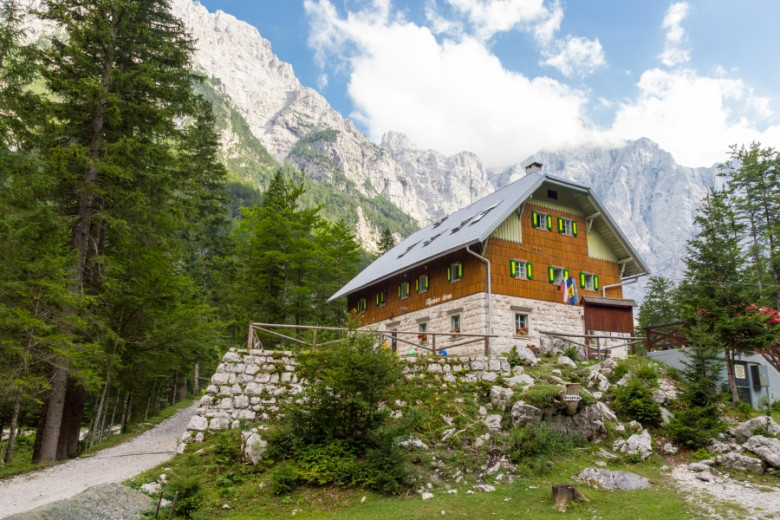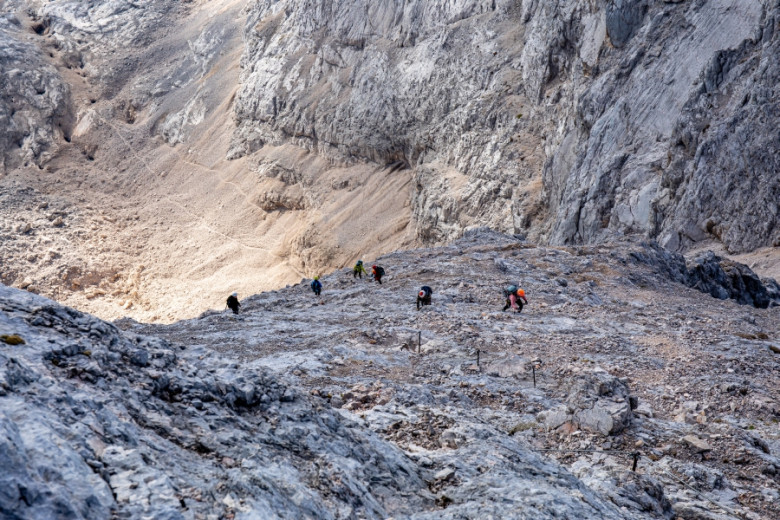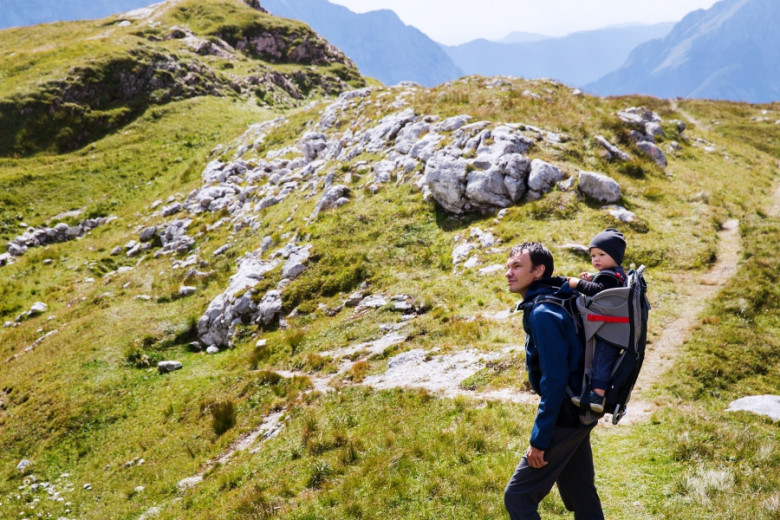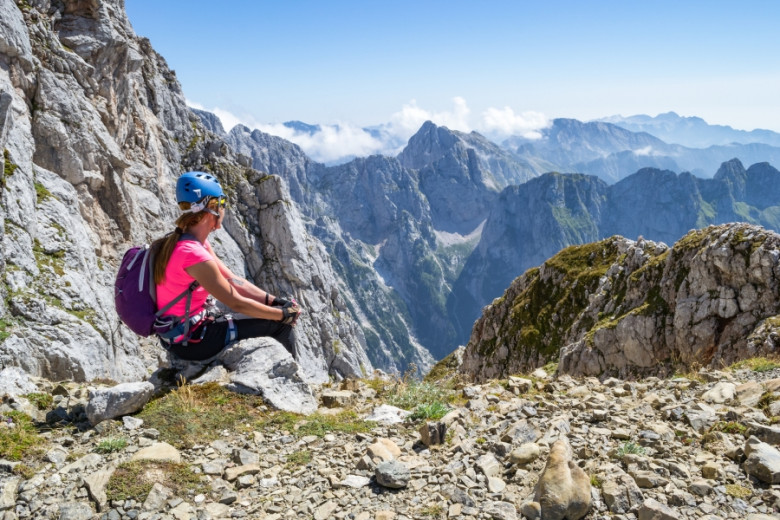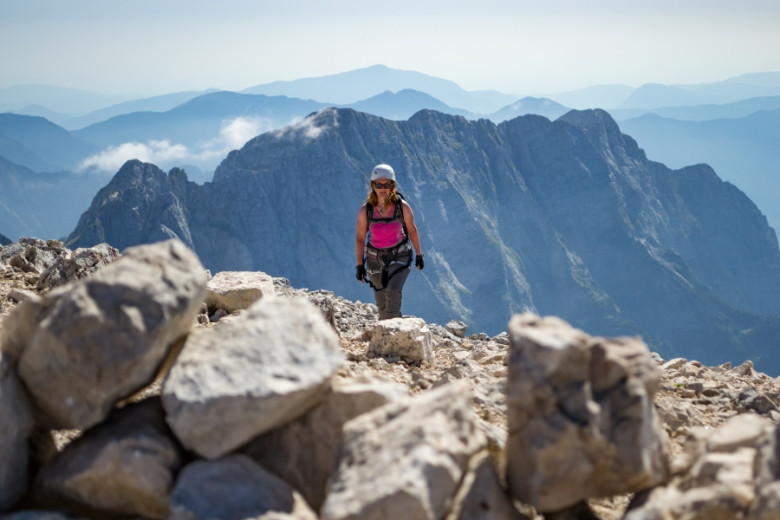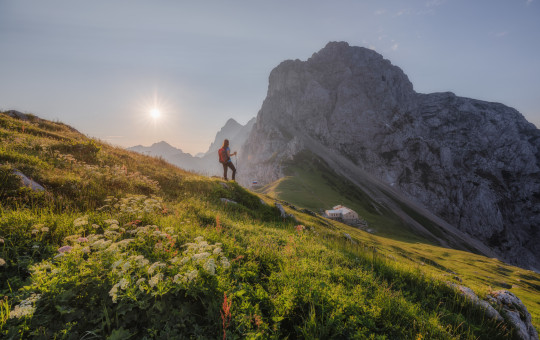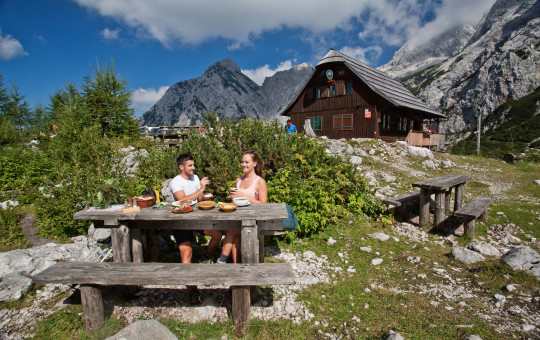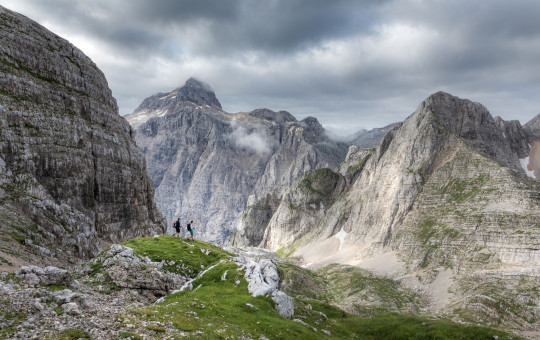Date: 26. July 2023
Time to read: 3 min
Slovenia boasts the beautiful world of the Alps and the foothills of the Alps, which each year attracts many foreign and domestic visitors to the unspoilt nature. The Slovenian mountains receive 1.7 million visitors each year. However, nature can be unexpected, so only go to the mountains well equiped and carefully.
Over 10,000km of hiking trails are available to hikers in Slovenia, and they are extremely varied and, above all, of varying difficulty. Mountain trails connect valleys with peaks and also link huts that provide accommodation or food for hikers; there are 179 mountain huts, shelters or bivouacs in Slovenia.
Mountain huts have a purpose and a mission. The Slovenian Mountaineers' Code of Honour, available on the website of the Alpine Association of Slovenia, states that "mountain huts (lodges, huts, shelters and bivouacs) are intended for shelter, rest, food and mountaineering training". As the wishes and needs of mountaineers are quite various and the huts also vary in terms of equipment and provision, some adaptation is of course necessary.
Caring for sustainability in the mountains
It is important to use the services of a mountain hut in a way that uses as little energy and water as possible, makes as little noise as possible and produces as little waste as possible. If possible, we should take the latter back to the valley ourselves. In the hut, be considerate to staff and visitors and respect the house rules. In the huts, we will be welcomed with hospitality, modest shelter and service, information on the state of the trail and the weather forecast and notification in the event of an accident. By eating in mountain huts, we reduce the weight of our rucksacks and help the huts and the mountaineering associations that maintain them.
Caution in the mountains
Even though there is beautiful summer weather in the valley, don't let that fool you. If you are heading to the mountains, be aware that the conditions in the Alpine world are often unpredictable and the weather can change quickly. It is therefore good to know a few guidelines on how to go to the mountains safely, but above all it is important to go on a tour that matches your fitness level.
The Alpine Association of Slovenia recommends that mountain visitors who are not skilled in the mountain world and who do not have enough experience of their own join mountaineering associations and go to the mountains with them in organised groups under the guidance of an Alpine Association of Slovenia guide. If this is not convenient for you but you are still unsure about your knowledge and your pace, we recommend that you go on hikes with a mountain guide. They will take care of your safety without you having to be part of a group. In both cases, you will gain or renew your knowledge of safe movement in the mountains.
A few tips before heading to the mountains in summer:
- A few days before you set off, keep an eye on the weather forecast for the mountains you are heading to and take note of the information and any warnings about the conditions in the mountains.
- Choose routes that are suitable for your psychophysical abilities and adapt to the weakest participant on the tour. Ask yourself honestly how well prepared you are.
- Carry appropriate mountaineering equipment and learn how to use it beforehand.
- Check the openness of mountain huts and the condition of mountain trails, information is available on the website of the Alpine Association of Slovenia. Do not choose trails that have been closed for use by the Alpine Association that manages the mountain trail.
- It is important to set out early enough to avoid storms, which are most common in the afternoon, by which time you should be safe in the valley or in a mountain hut.
- Inform your family members about your routes and plans. It is advisable to leave a note in a prominent place in your car with the details of your planned tour. Sign up in the registration books at the huts and peaks, which will be of great help to mountain rescuers in the case of enquiries.
- Mountain conditions can be unpredictable and snow fields can surprise you on some mountain trails, especially on the shady and northern slopes, even in the summer. Do not be fooled by the temperatures in the valley and always keep warm clothing in your rucksack, including a hat and gloves.
- Study the route carefully and familiarise yourself with the potential dangers on the way. Carry a mobile phone with a charged battery, and ideally carry a spare battery. Make sure you have enough battery power to call for help at all times.
- Start to warm up slowly and prepare your body for several hours of walking. Adjust the walking speed to the weakest participant.
- Choose safe places to rest where there is no risk of slipping, falling rocks, avalanches and away from direct sunlight. Always make sure you protect yourself from the sun with a suitable SPF, a hat and good quality sunglasses. Wear a helmet on mountain trails that are exposed to the possibility of falling rocks or bumping the head in a rock.
Mandatory equipment that should be in every mountaineer's rucksack (regardless of the type of tour)*:
- an alu-foil or large black bag and a bivouac sack,
- a personal first aid kit,
- a head torch and spare batteries,
- a mobile phone with a full battery,
- a notepad and an ORDINARY pencil,
- a candle and matches in a watertight bag,
- "iron reserve" (food that has a high energy value and a long shelf life, is light and has a small volume).
Also carry warm clothing, a hat and gloves, even in the summer, as the weather changes very quickly in the mountain world and very low temperatures and snow are not unusual in the mountains in the summer.
* Source: Alpine Association of Slovenia

